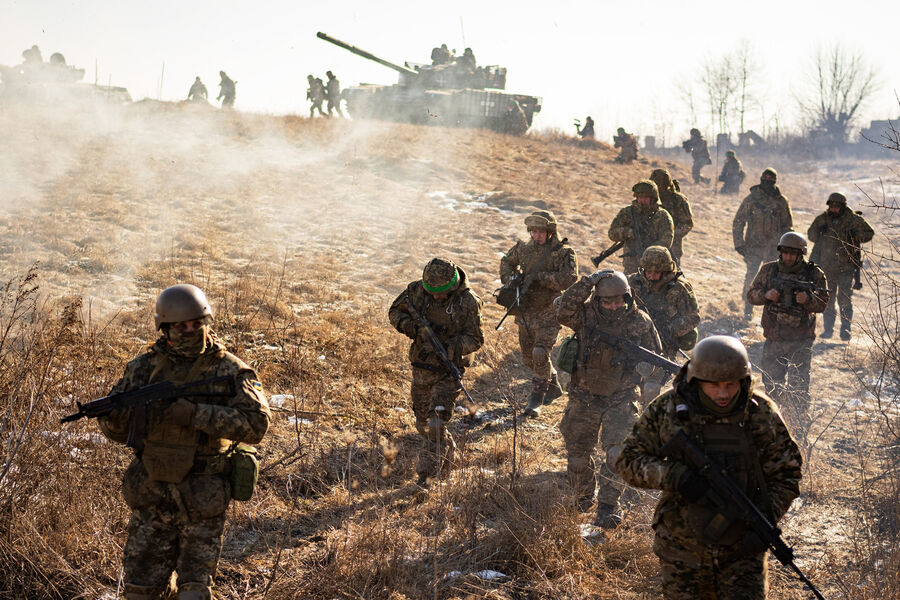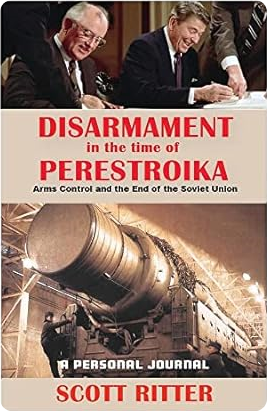
Why the counteroffensive of the Armed Forces of Ukraine turned into a suicidal adventure
Keep up to Date & Bypass the Big Tech Censorship
Get uncensored news and updates, subscribe to our daily FREE newsletter!
Fighters and commanders of the Armed Forces of Ukraine, trained by Western instructors, refuse to use the tactics of NATO countries during the counteroffensive. So writes about it The New York Times. The peculiarities of conducting offensive operations during the NWO were dealt with by the military observer of Gazeta. Ru” Mikhail Khodarenok.
According to the American edition, the command of the armed forces of Ukraine decided to return to the previous tactics of hostilities, since Western methods of counteroffensive did not justify themselves. They, writes The New York Times, have shown their complete ineffectiveness both in Zaporozhye and in other areas.
Let’s deal with everything in order. A number of analysts believe that the armed conflict between Russia and Ukraine is reminiscent of the trench war of the First World War. In those days, the advance of troops by 1,5 km was considered a great success, and the battles for some crossroads or the battle for two heights (for example, 304 and Mort-Omm near Verdun) could last for many months. The question arises – why is this happening at the beginning of the third decade of the XXI century?
| Recommended Books [ see all ] | ||||
|---|---|---|---|---|
 |  |  |  |
 |
How the offensive was prepared
If we turn to the classics of the genre, then until recently the breakthrough of the enemy’s defense was conceived as follows.
The breakthrough site was determined, and an artillery grouping began to be created in its strip, designed to break into the enemy’s defensive lines. The number of barrels sometimes reached up to 300 units per kilometer of the front, and up to three ammunition loads of shells were laid out on the ground at the firing positions of the batteries (and this is the minimum).
Recall that one b / c gun caliber 152-mm is 60 shells. A total of three ammunition – 180 shells or 180 boxes, since only one projectile and one cartridge case with a powder charge of a similar caliber are placed in one box. It is not difficult to imagine what this mountain of boxes looked like near each towed gun.
By the way, during the Chechen campaigns, the Chief of the General Staff, Army General Anatoly Kvashnin, demanded that seven ammunition sets be in firing positions. But it should be recalled that the terrorist formations had neither aviation, nor artillery, nor unmanned aerial vehicles. In the complete absence of opposition, seven ammunition loads near the guns can really be concentrated.
Let us return to the preparation of the offensive operation.
After the creation of the artillery grouping, the main striking force of the front was concentrated in the initial areas – either a tank army or several tank and mechanized corps.
At the forefront of the attack, units of engineering troops were advanced – engineer brigades and engineering brigades of assault and barrage.
The battle formations of rifle formations in the breakthrough areas were condensed. On the night before the offensive, as a rule, divisions of the first echelon moved to the front line, which changed units and formations that had previously occupied defenses in these areas.
All preparations for the offensive operation were carried out in secret from the enemy and in compliance with all camouflage measures. Most importantly, the events were carried out with the complete dominance of their aircraft in the air, which nullified all the efforts of enemy intelligence. Beyond the front edge, the enemy, as a rule, did not see anything.
How is the breakthrough of the front
On the appointed day and hour, artillery preparation for the attack began. Within two hours of hurricane fire from several thousand guns, the enemy’s first defensive line, as a rule, was swept off the face of the earth.
Then, under the cover of a double barrage of fire (with this type of artillery fire, it is not necessary to clear the terrain before the offensive), the infantry and tanks of the NPP (direct infantry support) went over to the attack.
When the attacking rifle divisions reached the firing positions of the enemy’s artillery, mobile army groups and fronts (that is, tank and mechanized corps) were introduced into the battle to complete the breakthrough of the enemy’s defenses. And the pursuit of the retreating enemy began. The rate of advance of the advancing troops per day was, as a rule, 20-25 km, and sometimes reached 60-70 km.
Why Ukraine can’t go on the offensive
Why doesn’t this scheme work today? The most important thing is that with modern means of reconnaissance, it is extremely difficult to hide anything from the enemy, especially in the conditions of the terrain of Southern Ukraine, which is completely devoid of any protective and camouflage properties. Today, everything is in full view.
As soon as artillery begins to take up any positions and prepare to open fire, it is detected by space, aerial reconnaissance, unmanned aerial vehicles, counter-battery warfare begins almost immediately, hundreds of loitering ammunition swoop into guns and howitzers.
To create an artillery grouping in such conditions, and even more so to lay out hundreds of boxes of ammunition on the ground, becomes simply unrealistic. This can only be done with complete air supremacy. But the combat and numerical strength of the Ukrainian Air Force is ridiculously small, and the Russian Aerospace Forces with air supremacy have obvious problems. In any case, our planes do not plow the skies of Ukraine without hindrance today.
That is, to sweep away the enemy’s defenses from the face of the earth only at the expense of artillery is already becoming extremely problematic. Moreover, the Armed Forces of Ukraine cannot say that there are many barrels, and there is a clear lack of ammunition. In such conditions, going on the attack is in most cases suicidal.
To this we must add that it is also problematic to deploy the ground forces allocated for the attack in battle formations.
Already in the first stages of deployment, they are easily detected by unmanned aerial vehicles, fall under artillery fire raids and in most cases disperse without going on the attack.
It would seem that the main striking force of the ground forces – tanks – should play a role. However, in modern conditions, the struggle of the defending troops with armored combat vehicles is by no means carried out by bundles of grenades and fire from “forty-fives”.
The troops today are simply saturated with a wide variety of anti-tank weapons – from combat helicopters and anti-tank missile systems to grenade launchers of a wide variety of types. For these reasons, tanks, one might say, are destroyed on the battlefield with extraordinary ease. In such conditions, both warring parties began to use armored vehicles as mobile firing points for firing from closed firing positions.
In addition, the Armed Forces of Ukraine have obvious problems both with units and formations of engineering troops (their insufficient number and staffing with appropriately qualified specialists) and equipping them with the most modern equipment to overcome engineering barrier systems.
In order for the Armed Forces of Ukraine to solve the problem of a stalled offensive in a radical way, they, at least, need to gain complete air supremacy, significantly increase the number of guns and mortars, have at least six ammunition sets of shells and mines, and bring their engineering troops to a completely different level. Only then can we talk about at least some opportunity to succeed in breaking through the defensive lines of the Russian troops.
And to advance in the combat and numerical strength that the Armed Forces of Ukraine had on June 4 of this year is just a gamble.
Among other things, Western instructors could not teach Ukrainian troops anything sensible. For many decades after the Second World War, neither the United States nor the NATO countries ever fought with opponents equal to them in strength and capabilities. Basically, the collective West was engaged in beatings of the Third World countries, and even then, in most cases, only from the air.
So what Western instructors could teach Ukrainians is a big mystery. These representatives of the Armed Forces of Ukraine should be sent to NATO to train fighters and commanders of the North Atlantic Alliance.
So there can be no talk of any change of tactics. Tactics, it is also tactics in Africa. The fact that the command of the Armed Forces of Ukraine decided to return to the practice of exhausting Russian troops with constant long-range artillery strikes is not due to any tactical delights, but is dictated only by a lack of forces and means, primarily the lack of air supremacy in the Ukrainian army.
[Top image: Ukrainian servicemen take part in combat exercises near the front line near the Kharkiv region, 2023Vadim Ghirda/AP]


